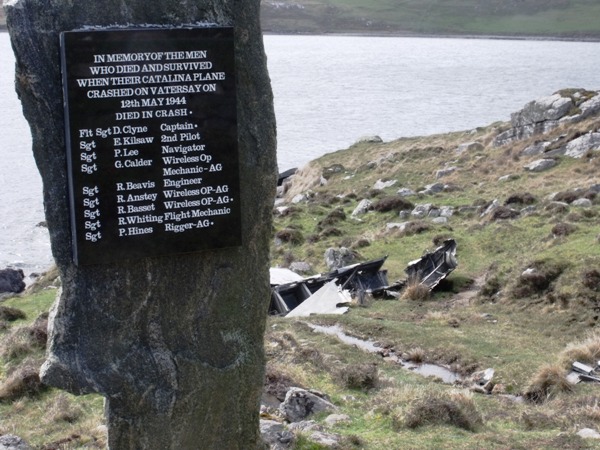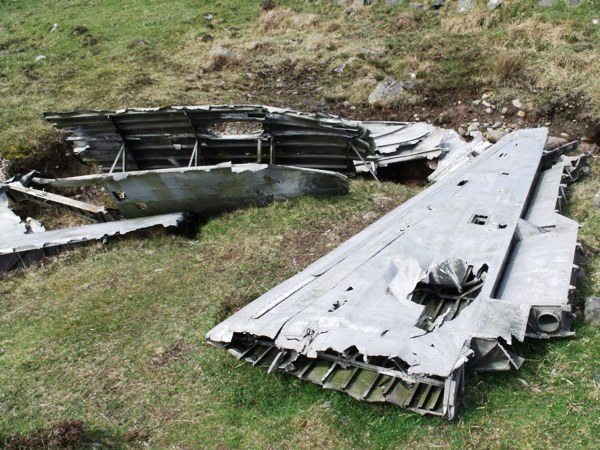
If you take a walk around the island of Vatersay in the Outer Hebrides, you’re likely to stumble upon a very interesting discovery, behind which lies a tragic tale. Just off the road (there’s really only one) as it runs around the east of the island you will find a black stone memorial, and scattered around it, the scattered wreckage of an aircraft.
The plane is a Catalina, built by the Americans in the 1930s and 1940s as a long-range patrol plane and often referred to as a flying boat for its ability to land and take off at sea. This particular plane was being used by the RAF during WW2 and was operating from Oban. On the night of 12th May 1944 the plane took off with nine crew on board for a training exercise. They were due to fly over the nearby point of Barra Head, but lost their way and found themselves well off their intended course. The pilot tried in vain to gain altitude and the plane crashed into the side of the nearby hill Heishavel Beag. Three of the crew were killed, with six surviving the crash.

RAF recovery teams later broke up the plane and dragged the wreckage down the hill, but didn’t get very far before leaving the fuselage to rest just below the road. It’s been there for the last 69 years and it is only fitting that the memorial should be erected next to this rather sombre landmark.
I was interested to find out too that the pilot, Flight Sergeant David Clyne, was also an international footballer before the war. His name is included in a memorial at Hampden Stadium (presumably he played for Queens Park F.C. although I can find no record of this).
I’ve visited the island of Vatersay twice and both times stood at the memorial and pondered the final moments of those three men who died in the crash and the traumas experienced by the six survivors. The weather changes constantly around the islands and landing on the famous beach runway on neighbouring Barra can throw up challenges to the most experienced pilots even with today’s navigational tools to hand (as I discovered at first hand recently when I was a passenger on a flight into Barra that was struck by lightning).

The aircraft parts are spread across the rocky hillside as it slopes sharply from the road towards the sea. Visitors to Vatersay are free to inspect the wreck at close quarters. It is comforting to see that people appear to have been respectful enough to visit with a hands-off approach. The trust placed in visitors to the site to behave appropriately without putting up barriers or warning signs is perhaps less surprising when considered in the context of an island life where keys are left in doors and cars rarely locked.
The wreckage of the Catalina on Vatersay is a sombre reminder of the many tragedies of war. For those with an interest in the history of aircraft or of the war years, it is also a rare chance to see the remains of a common wartime plane; left unguarded and untouched for almost 70 years, it reveals much too about life on the island where it has been allowed to rust in peace.
Disclosure: I was hosted by Visit Scotland for second visit to Barra in 2013 as I was there to research a commissioned article for Coast magazine – link to follow in due course. Thanks to Rob at Barra Island Tours for kindly showing me around the island, including a visit to Vatersay and the site of the Catalina.




